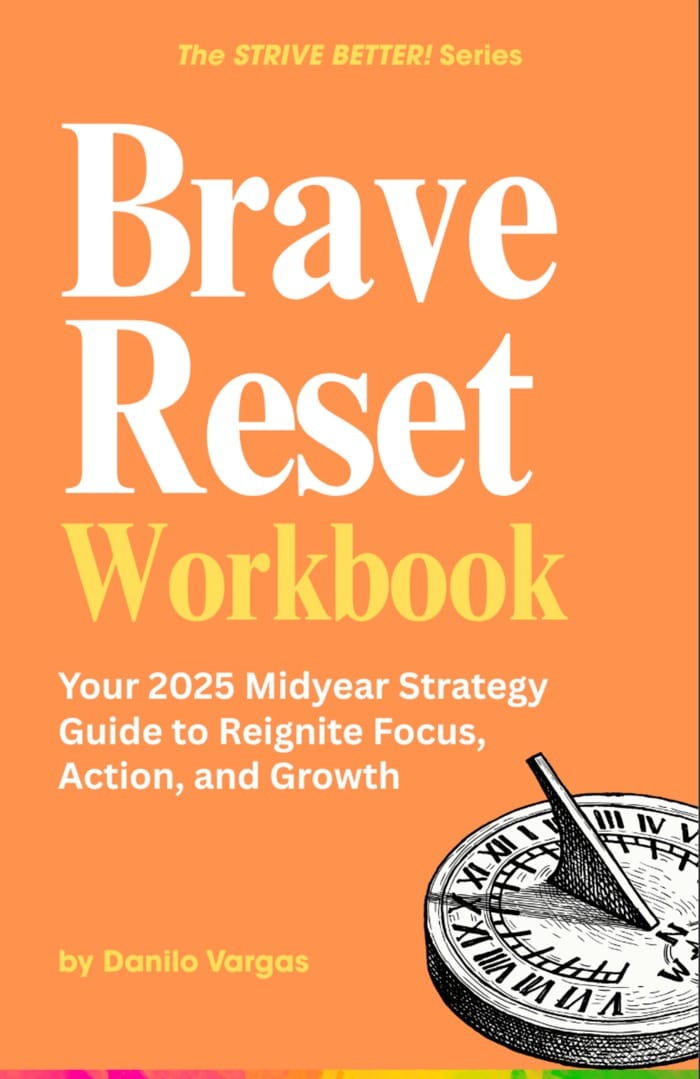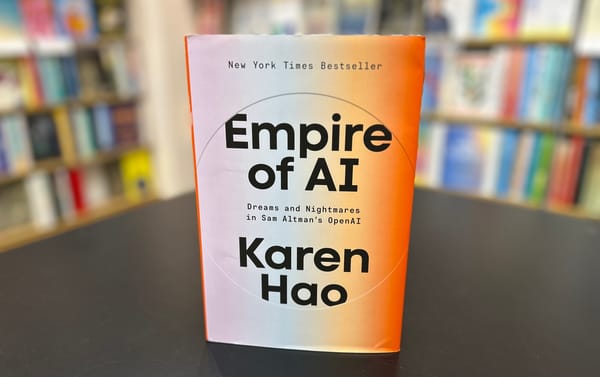Start With Who: Where Your Business Strategy Really Begins
The ten immutable laws of identifying your ideal customers.

Who are you here to serve?
Another example of a vital and utterly simple question, but one we often get wrong. Don’t feel bad if you’ve struggled with it. We all have. Even enormous corporations run by people who should know better have gotten that question spectacularly wrong. Think: New Coke, McDonald’s Mozzarella Sticks, and Google Glass, to name but a few examples of marketing misfires; legendary companies forgetting who they serve and what those people really wanted.
Identifying our ideal customer is especially tricky for solopreneurs because we aren’t trained in the art and science of marketing, or marketing research, or market segmentation. We just know we need customers and jump right in to create offerings we think they’ll buy, only to find disappointment and heartbreak at the end of the rainbow.
Even when we have an elementary understanding about this, our efforts often go astray. That’s because in a world awash with data, marketing tools, and instant AI-generated customer avatars, it’s tempting to believe that identifying one’s ideal customer is simply a matter of ticking demographic boxes or selecting a niche and being done with it. But in the trenches of real-world entrepreneurship, getting clear about who our customers are is not about a checklist, or concocting elaborate fantasies about who we think our customers are—it’s a multifaceted, strategic foundation for our success. If you misidentify who your customer is, then I’m afraid that no amount of branding, funding, or tireless hustle will make a difference.
To help you get this right, I’ve created a framework which I’m calling the Ten Immutable Laws of Finding Your Ideal Customers. This is not another list dressed up in corporate jargon, nor a feel-good story about "following your passion" (or worse, “if you build it, they will come”). No, these are the ten commandments—battle-tested and data-backed—for discovering the only people who matter in the first few years of your business: the right ones.
Law #1: You Can’t Serve Everyone
This is the foundational truth. Good strategy is by necessity about trade-offs. As Michael Porter put it, “The essence of strategy is choosing what not to do.” Attempting to serve everyone leads to bland messaging, bloated offerings, and eventually, a failed business. Saying no to the wrong customer is the first act of saying yes to the right one. This requires you to narrow your focus and stop trying to be the one-stop-shop for everyone.
I once had a mentor who taught me that marketing is not unlike romance or romancing. At the risk of stretching the metaphor beyond recognition, one might choose to be promiscuous in one’s romantic pursuits, or one can choose to find that special, wonderful, someone, and we can become experts in finding ways to delight them. That is, essentially, the same thing we have to do as solopreneurs. Not with a generic mass of prospects but from a carefully selected group of people to whom we want to write love letters and profess our affection.
Here’s an example of how this might work: A top-notch virtual assistant stops trying to romance any and all busy CEOs and decides to show her love and appreciation to a very special group: successful female startup entrepreneurs working to scale their budding business empires.
Interestingly, they say that loving others begins with loving oneself so here’s a simple, unorthodox hack that solopreneurs may find useful. Go look in the mirror (long and hard) then look deep inside yourself for the things you value most; then, go help people who look like you get the essence of what you want for yourself. This may sound counterintuitive, and won't work for Coca-Cola or Microsoft, but it illuminates the path for the solopreneur.
Law #2: Narrow Your Focus
Successful entrepreneurs start by doing one thing extremely well for one kind of person. Whether you're a candle-maker, software developer, or dog walker, specificity and adding utterly unique value beats generality every time. This is what Seth Godin calls creating your “Purple Cow.” Something remarkable. Unforgettable. But you can’t dream up a Purple Cow if you’re busy trying to please everyone. Generalists are busy trying to sell commodities to anyone who will listen. That’s why they’re embroiled in price wars and find their offers easily drowned out by market noise. Specialists are the ones with the Purple Cows and as a result are the ones who command margins, trust, and loyalty. So don’t be fooled. Narrowing your focus may feel like a constraint, but it's actually a lever.
Law #3: Know the Real Job They’re Hiring You to Do
Clayton Christensen’s "Jobs to Be Done" theory offers solopreneurs a vital insight: people don’t buy products—they hire them to perform jobs in their lives. Emotional jobs. For example, a mother doesn’t hire a stroller; she hires peace of mind while moving through a noisy, crowded city. A freelancer doesn’t buy accounting software; they hire relief from anxiety about taxes. Strollers and tax software are commodities. If you don't understand the real job and the emotional trigger behind the purchase, you’ll design a feature list instead of a solution.
Law #4: Study What They Do, Not What They Say
File this one under “the focus group conundrum.” Surveys or focus groups say one thing; customer behavior says something else. Consumers claim to value sustainability, for example, but buy plastic-wrapped convenience. People describe themselves as health-conscious and then binge late at night. Only actual behavior reveals certain truths. As Nobel laureate Daniel Kahneman famously showed, much of human decision-making is irrational, emotional, and invisible to introspection. Focusing on fewer people, narrowing your focus, focusing on the job not the product, and learning to observe and see what is unsaid but communicated makes for a powerful marketing research recipe. It gives you X-ray vision!
Law #5: Find the Trigger Moment
The best customers are not passive spectators. They’re in motion—driven by a moment of frustration, urgency, or longing. The parent who just found out their child has allergies. The employee who just got laid off. The entrepreneur who just lost their first client. These moments create receptiveness. Meet them at this juncture, and they’re not just customers—they’re ready for the transformation you can help them create.
Law #6: Follow the Spending
It’s fashionable in startup circles to glorify pain points but pain alone isn’t enough. The real moment of truth is payment. If a segment of people is suffering but not spending, it is either a low-priority problem, a group that lacks purchase power, or has found satisfactory alternatives for the job they need done. Unfortunately, we can’t build a profitable business with just noble intentions. Find the people who are already spending and are still unsatisfied.
Law #7: Find Them in the Real World
Digital marketing promises global reach, but digital reach without real-world access can be meaningless. You must know where your customers gather, where they spend their time, online and offline. Are they in online community threads? Are they at trade shows or similar events? Do they follow certain influencers or podcasts? Sometimes we’ll need to locate them all the way down to their zip code or business address. Because distribution is a prerequisite for growth, if you can’t reach them repeatedly, you can’t sell to them sustainably.
Law #8: Learn to Speak Their Language
Positioning is a form of language. The best marketers do not invent language—they steal it; in the way that, as the saying goes, good artists borrow and great artists steal. They use the exact words that their customers use to describe their problems, frustrations, and desires. If your messaging sounds like a generic marketing brochure and nothing like the customer’s own words, it will likely fall flat. Donald Miller’s StoryBrand framework is clear on this: you are not the hero. Your customer is. Your job is to speak fluently in the emotional language of their struggle.
Law #9: Validate with Real People
Build it and they will come? Probably not. Entrepreneurs must venture out of the building and practice what Professors Kouzes and Posner call, “outsight.” Translating that to our purposes means that no persona built in a spreadsheet can substitute for real feedback from a living, breathing person. Five interviews trump 50 assumptions. We should remember that validation is not a startup stage—it’s a constant business practice. If your idea doesn’t make someone’s eyes light up, keep searching.
Law #10: Choose a Customer You Want to Fight For
This final commandment is rarely discussed in MBA textbooks, (or classes for entrepreneurs) but it might be the most important. Building a solopreneur business is hard. We will thrive if we genuinely care about the people we serve. If their success truly moves you, you will stick with them long enough for it to matter for both of you. If not, fatigue will set in and outpace your motivation. The best entrepreneurs are not out to merely solve problems—they’re out to champion the people they believe in.
All that to say this….
Identifying your ideal customer is not about clever segmentation; it’s not about chasing trends or filling out templates. It’s an act of strategic empathy, behavioral observation, and piercing clarity. The most enduring businesses are built not on hacks, but on insight. Not on noise, or busy-ness but on understanding and the deliberate action taken based upon that understanding.
In an era when technology intrudes into every aspect of entrepreneurship, the rarest and most valuable skill remains the same: knowing—deeply, precisely, and unapologetically—whom you are here to serve.
If you don’t know who they are exactly and thoroughly, nothing else matters.
If you do?
Everything gets much easier.
And everybody wins.

Brave Reset Workbook
This is NOT just another ebook. It’s your midyear strategic planning tool. It provides you with a focused way to assess your most important strategic decisions and create a better plan for the second half of 2025.
Get the clarity, inspiration, and focus you need to finish with a BIG win this year!




